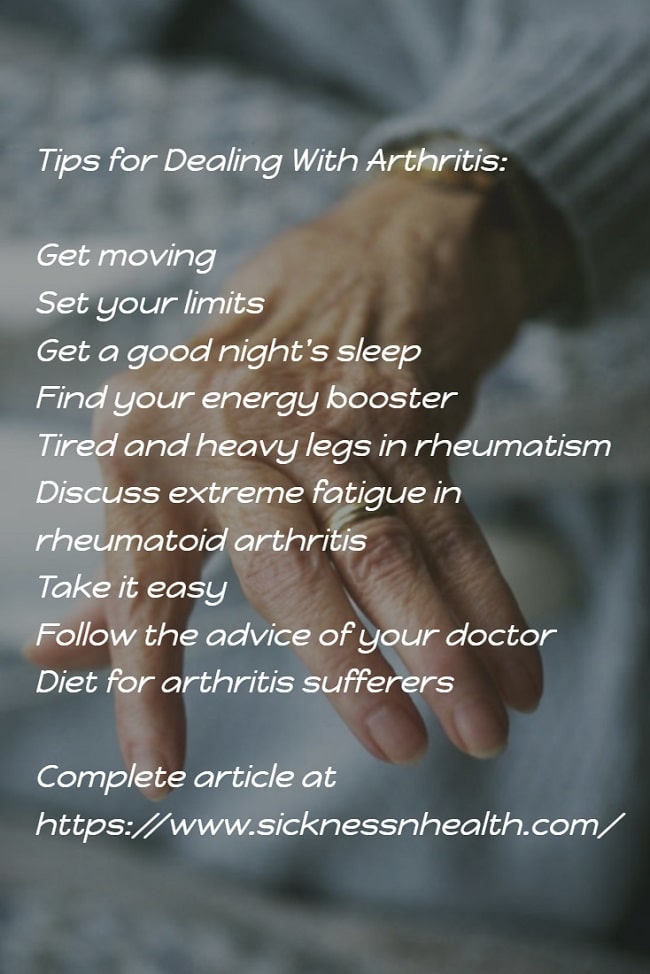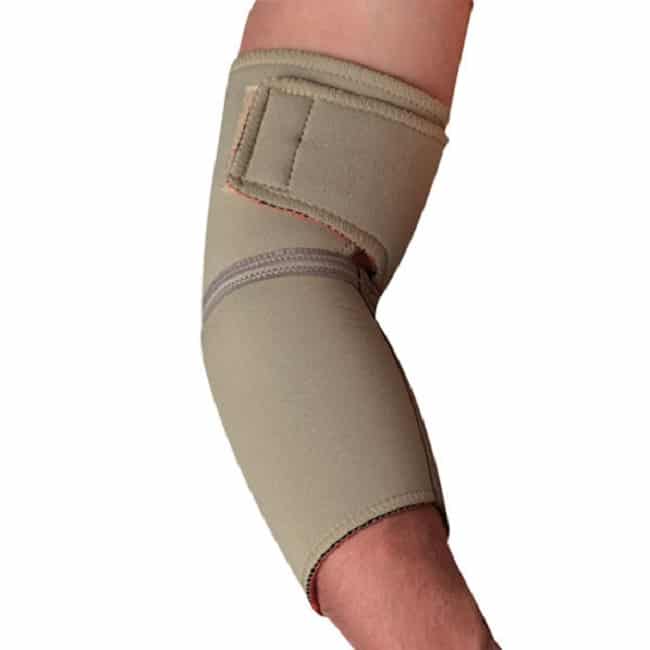
Rheumatoid arthritis is a chronic inflammatory systemic condition in which inflammation of the joints is prominent. It is a chronic, symmetrical polyarthritis of mainly wrist, hand and foot joints that results in pain, stiffness, radiological damage, and loss of function.
An inflamed joint hurts, is warm and feels swollen. Morning stiffness is common and fatigue is also a complaint that many people with RA suffer from.
Rheumatoid arthritis is a complex disease that can have many consequences for the daily life of patients. In most patients, the symptoms increase with the passage of time. However, there are also patients who recover partially.
Page Contents
100 Questions & Answers About Arthritis
Often the disease goes with “ups and downs”. The periods in which the disease is active and calm, alternate.
The course of the disease can vary greatly between patients and is difficult to predict. In the initial period, it is impossible to say how the disease will develop.
Some people have slight attacks to which they have no restrictions. Others have a few periods in which the disease is active.
They also have virtually no restrictions. If the disease process proceeds more aggressively and keeps returning, or remains constantly present, the consequences can be more radical.
When there is radiological damage it will usually increase over time and the large joints will increasingly become involved in the destructive process.
Ultimately, this disease can lead to severe disability.

Symptoms and complaints in rheumatoid arthritis
Typical inflammatory symptoms are the pain, swelling and especially stiffness of the affected joints. The pain in inflamed joints and tendons typically occurs at rest, to improve during movements. An important symptom is morning stiffness. In rheumatoid arthritis, this can sometimes last for hours.
Typical of rheumatoid arthritis is the symmetry of arthritis, meaning that right and left joints are each time affected together.
Muscles, tendons, mucous membranes and nerves, the so-called soft tissue, are also affected.
Because rheumatoid arthritis is a systemic condition, many patients show general signs of fatigue, emaciation, and fever. The fatigue in rheumatoid arthritis can partly be the result of anemia due to excessive consumption of iron, which is necessary for the production of new red blood cells.
Furthermore, attention must also be paid to extra-articular symptoms that can occur in almost all organs such as pleuritis (pleural inflammation), pericarditis (inflammation of the pericardium), eye abnormalities, skin disorders and rheumatism nodules (rheumatism).
9 Tips for Dealing with Arthritis Fatigue
In addition to wreaking havoc on the body, rheumatoid arthritis can also cause emotional symptoms, such as depression and anger, and fatigue.
Why chronic fatigue in rheumatoid arthritis?
Fatigue is part of rheumatism. People with this chronic joint disease get tired of nothing. It occurs suddenly and is experienced more extreme than ‘normal’ fatigue. And that exhausted feeling does not always disappear after a few hours of rest or a night’s sleep.
Just like pain, it is often not visible to the immediate environment that you are tired. Continuous or prolonged fatigue can also have a major impact on the lives of people with rheumatoid arthritis.
Here are some tips that can help you deal better with chronic fatigue associated with rheumatism.
1) Get moving
Energy is like money. You have to do something to make more of it. That means: moving with great regularity. Start slowly and build your effort up to five days a week for half an hour. Your blood, therefore, becomes more oxygen-rich, so that you feel better and fitter.
Choose an exercise that gives you the most pleasure. Walking, cycling and swimming are usually good forms of movement for people with rheumatoid arthritis.
You should first consult your doctor or physiotherapist when you start an exercise program. If you do not do it well or choose the wrong amount, the symptoms can worsen.

2) Set your limits
By doing a lot of things forced, you only make the fatigue worse. Therefore, brake yourself in time. For example, chop big jobs into smaller pieces.
And switch off strenuous activities with more relaxing tasks. And stop especially before the fatigue strikes.
3) Get a good night’s sleep
During sleep, the energy level in your body is rebuilt. However, you should prepare yourself for a good night’s sleep early in the evening.
Do not eat anything from three hours before you go to bed. And do not drink caffeine and alcoholic drinks in the evening.
These prevent you from falling asleep more easily and keep you awake. Take a warm bath just before bedtime to relax.
Always go to bed at the same time and set the alarm for a fixed time. Best is a quiet, cool and dark bedroom. More tips on how to have a good nights sleep…
4) Find your energy booster
What do you get energy from? Look for your personal booster. That can be a playlist with music that makes you happy.
A walk in an environment where you feel comfortable. Or building a puzzle or solving a crossword puzzle.
Some friends or acquaintances can also give you energy. Talking and laughing with them, or watching a funny movie together can also release “happy” endorphins. Look for it. Avoid people who drain energy from you.
5) Tired and heavy legs in rheumatism
In rheumatoid arthritis, you can also suffer from tired and heavy legs. Allowing cold or lukewarm water to flow past your legs can provide relief.
You can also massage your legs with a cooling gel.
Elevated legs at a higher level than your heart can also help, even when you sleep. If necessary, take magnesium to relax the leg muscles.

6) Discuss extreme fatigue in rheumatoid arthritis
Tell your doctor if you are constantly feeling tired. It can be a side effect of certain medications that he has prescribed for you.
You can discuss with your doctor whether the dose should be adjusted or whether you should try other medications.
You could also try liquid green lip mussel with Curcumin and Blackcurrant leaf. These are natural anti-inflammatory drugs that can not cause fatigue.
7) Take it easy
Do not lead your life with a crowded agenda. This way you can free up more time to enjoy things that give you more energy.
So, become an expert in saying ‘no’ to everyone who wants to seize your time. This becomes easier when you are open and honest about your fatigue with family friends, acquaintances and colleagues. Usually, you get understanding and support.
8) Follow the advice of your doctor
The inflammations associated with rheumatoid arthritis are real energy thieves. Chemicals are released that give you the same feeling as with a cold or flu.
So always follow the advice of your doctor. Take the prescribed medication exactly on time to slow the inflammation in the joints. In case of no or insufficient results, you should discuss this with your doctor.
A different treatment can then be sought that does work.

9) Diet for arthritis sufferers
In addition to following the directions OF your doctor, it is important to make some changes to your diet to help you cope with the symptoms of arthritis.
Below are the characteristics of a good diet for people with arthritis.
Although it may seem difficult to stick to it, we recommend that you try it anyway. Think of the painful consequences if you do not. Also, try to follow all of your doctor’s advice to maintain a good quality of life.
Foods that people with arthritis must eat
To combat the problems caused by this condition, we recommend people with arthritis to pay attention to what they eat. Try to include more of the foods described below in your diet.
Salmon
The first food that people with arthritis should include in their diet is salmon. This is because it is rich in omega-3 fatty acids, which have an anti-inflammatory effect.
It is recommended to eat at least two servings of salmon per week. If you cannot afford this, you can also opt for tuna or sardines. You can also do this if you find this boring food twice a week.
Soy
If you have opted for a vegetarian diet, fish is probably not an option for you. In this case, try soybeans and the products made from them.
This legume is rich in unsaturated fats and you can eat it in various forms:
- Tofu
- Sprouted beans
- Beans
- Milk
Soy is a very complete product because it contains a lot of fiber and proteins. This means that it has anti-inflammatory properties and improves your health in general.
Because it is such a versatile food, you can eat it at any time of the day. You just have to learn to combine it with other ingredients.

Vegetable oil of good quality
We already know that extra virgin olive oil has healthy fats that are good for the heart and to fight inflammation. But this is not the only kind.
The majority of the vegetable oils have the same properties. They also have the good properties of the nuts or seeds they are made of.
Two good alternatives to olive oil are linseed oil, rapeseed oil, and soya oil. These species contain alpha-linolenic acid (ALA) and add a new flavor to your dishes.
Foods that should be avoided by people with arthritis
The foods that you must avoid if you want to fight the inflammation include the following products.
Fried and processed food
Reducing your consumption of fried foods is the key in the diet for people with arthritis. This is because these foods aggravate the inflammation and also the problems they cause.
Instead, we recommend that you choose food that has been steamed, grilled, cooked or roasted in the oven. We understand that this can sometimes be difficult because of your fixed habits. But you only need a little willpower to achieve the desired result.
If you find it very difficult to implement these changes, you can also consult a nutritionist to help you make a plan. This is an investment that often leads to very good results and within a few months, you will be able to do it yourself.

Sugars and sweeteners
Other ingredients that people with arthritis should avoid are sugars and sweeteners. Unfortunately, they are in almost all products that are for sale.
For this reason, it is a good idea to invest in natural products and to prepare all your meals yourself. Remember that you can always change the taste of a dish with organic honey, maple syrup, agave syrup, and stevia.
Another option is to use herbs and spices. Try to take advantage of the benefits of herbs such as mint and basil, natural flavors such as vanilla extract. Also, consider spices such as star anise and cardamom.
Dairy products
In a diet for people with arthritis, dairy products should be avoided as much as possible. This group of foods can cause irritation and inflammation of the joints.
But this is not always the case, so you have to be careful to ascertain whether this is a problem for you or not.
If you have to avoid dairy products, remember that you have to add proteins to your diet in a different way, for example in the form of meat or other protein-rich foods.
In conclusion
There is life after rheumatoid arthritis.
Keep a positive attitude. Positivity ensures that the brain does not produce negative hormones. This way you can prevent depression and lead a full life.


